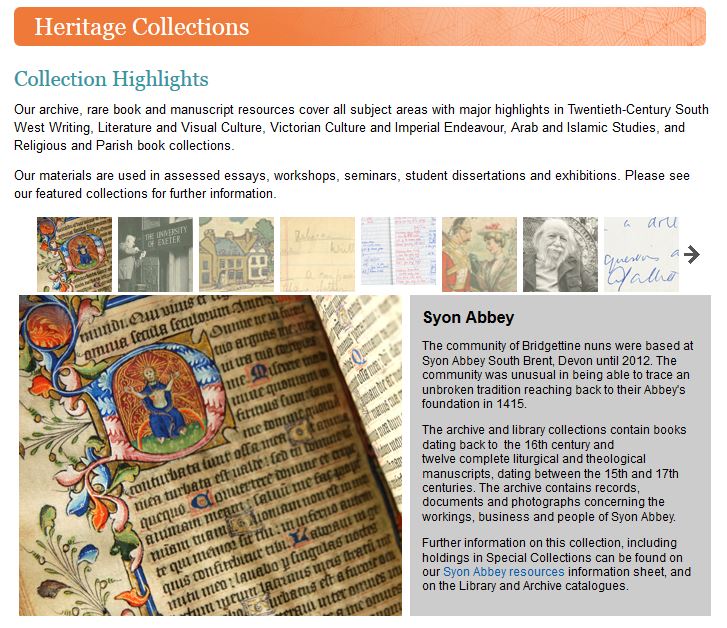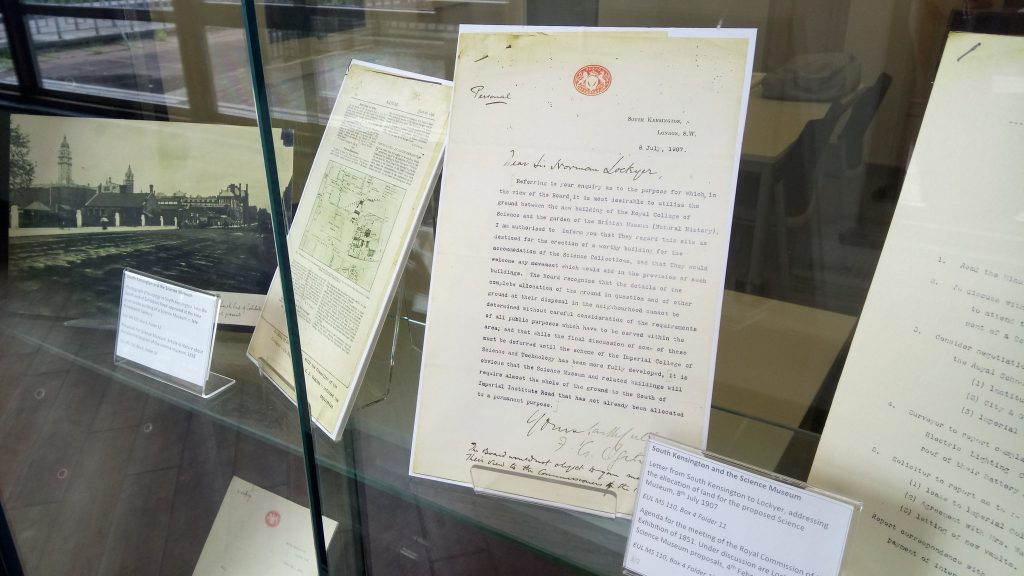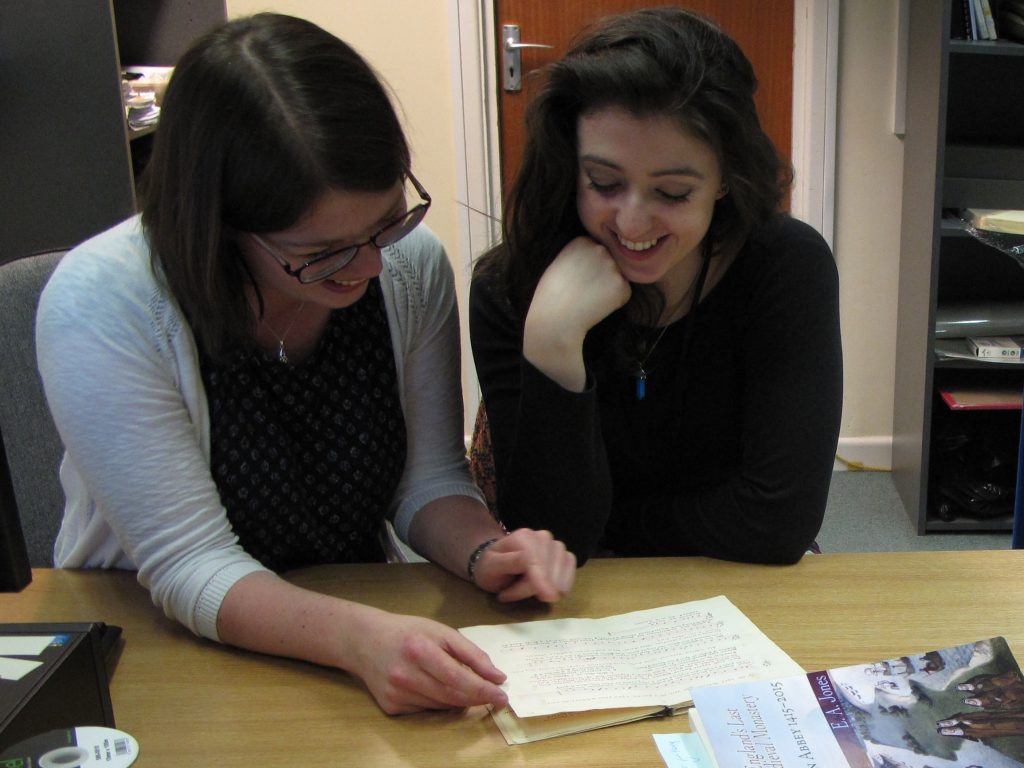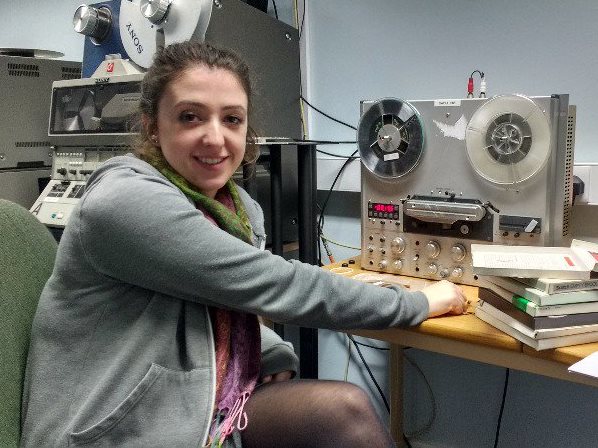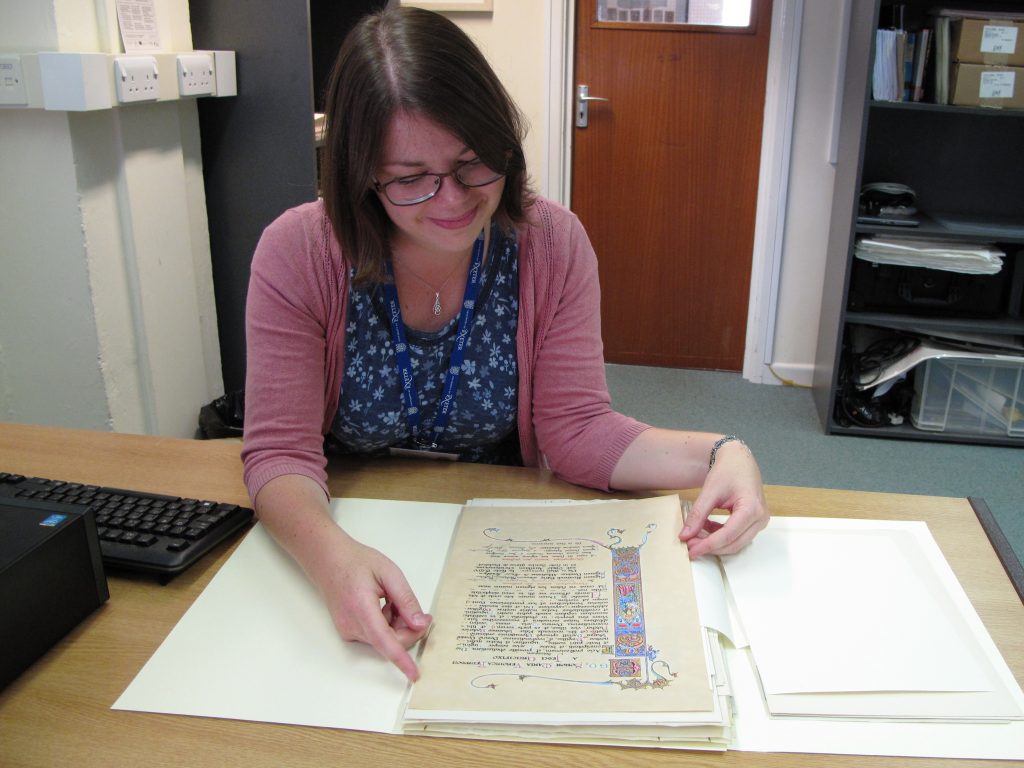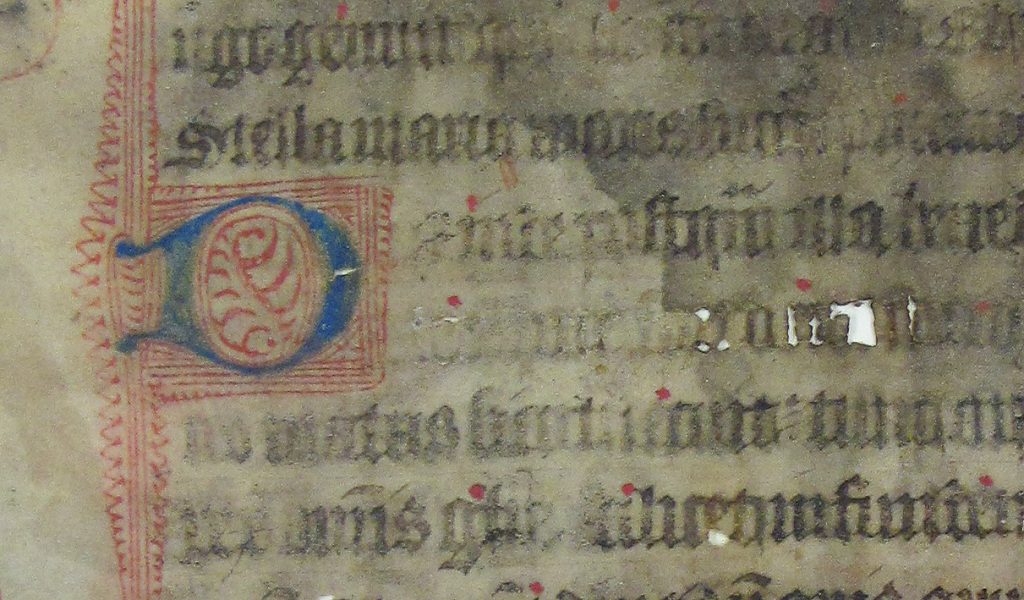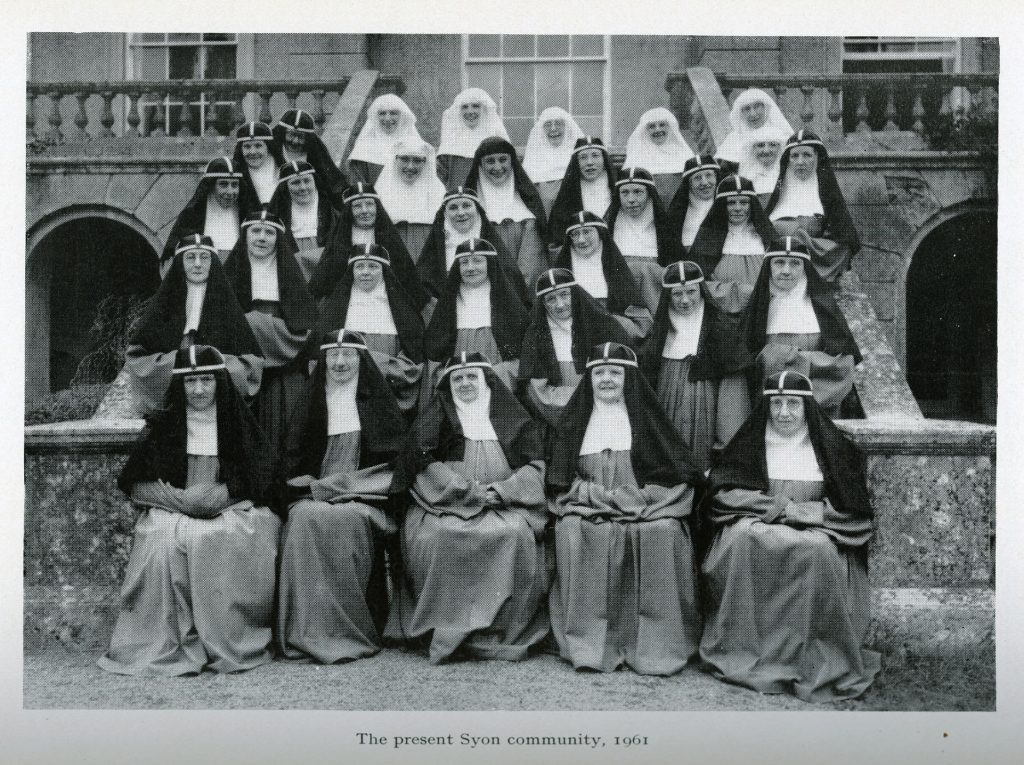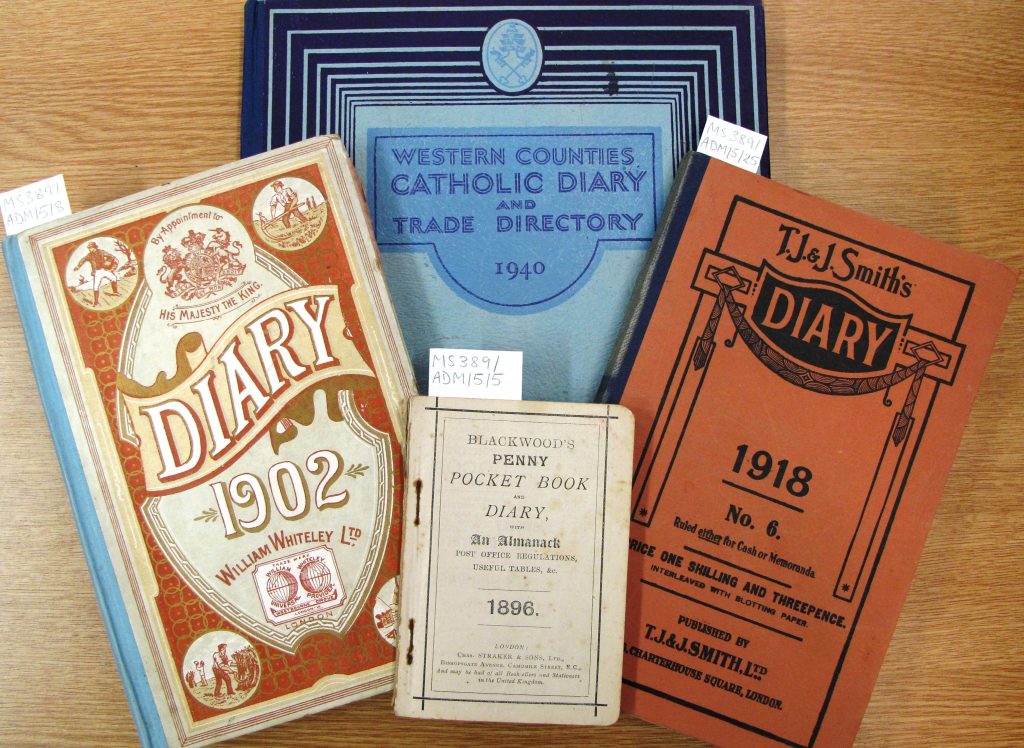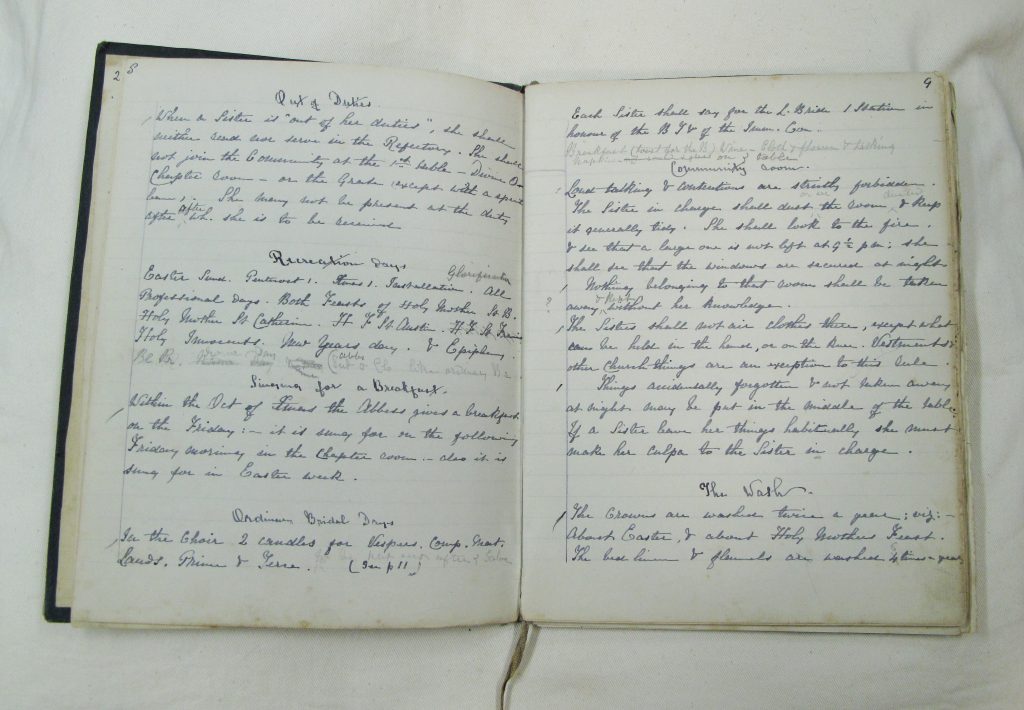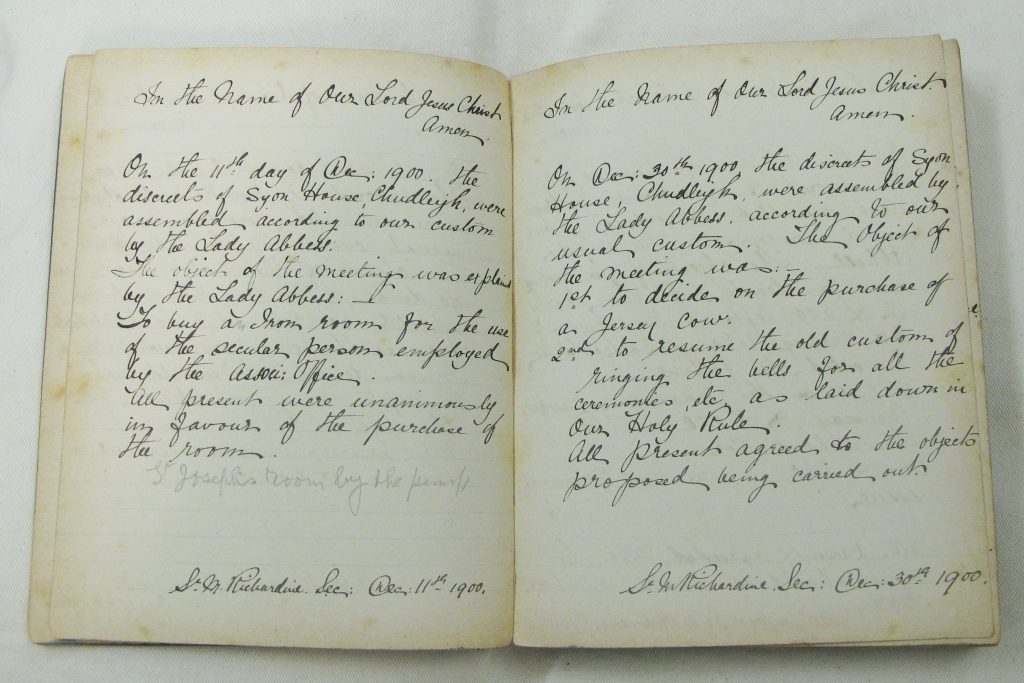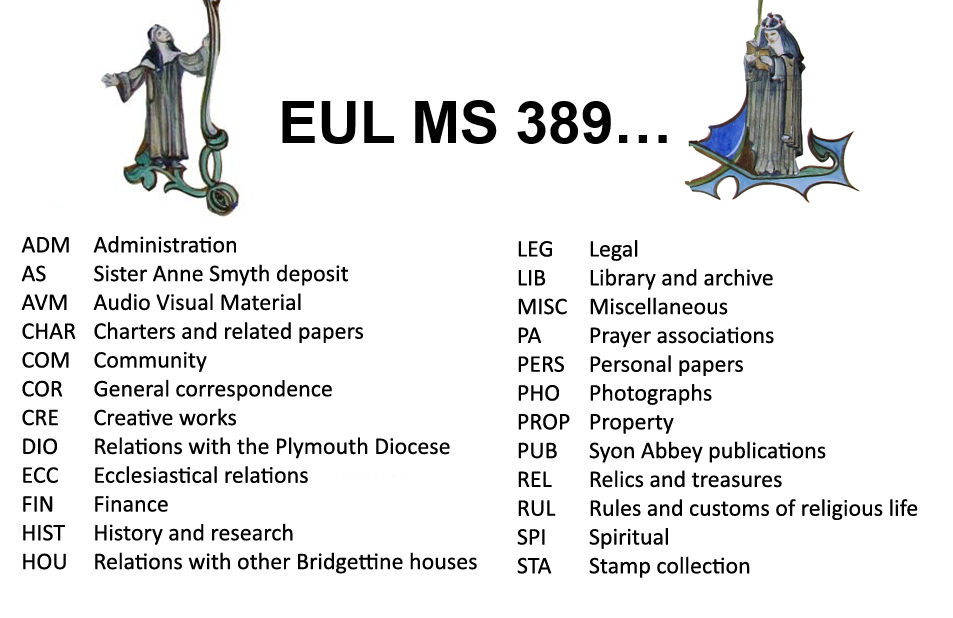My name is Sophie and I am currently a third year student at the University of Exeter, studying for a BA joint honours degree in History and Archaeology. In September I began volunteering at the University’s Special Collections, allowing me to gain valuable work experience, as I hope to pursue a career in the heritage sector. I have spent my time as a volunteer working with the Syon Abbey archive. My main role has been cataloguing the 100 diaries of the community from the late nineteenth to the twenty-first century at item level. I have enjoyed this task as it has provided me with a detailed insight into the daily life of the community.
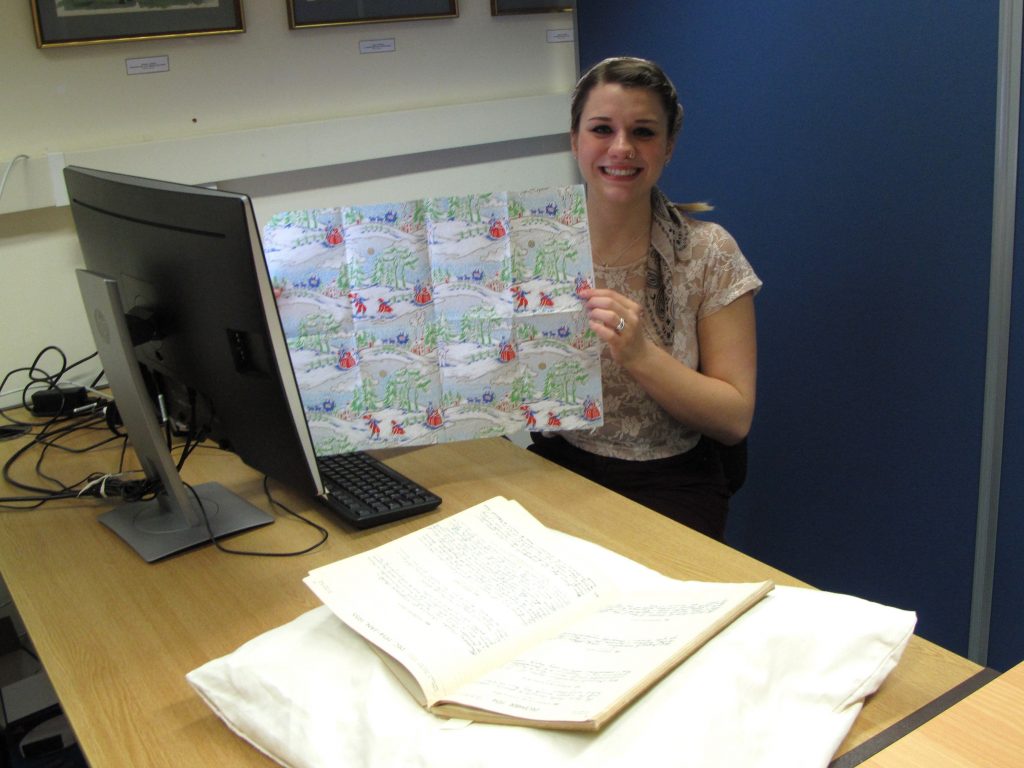
Sophie with a sheet of 1950s Christmas wrapping paper found inside one of the diaries in the Syon Abbey archive
References to Christmas in the Syon Abbey diaries
As Christmas is fast approaching, I wanted to share some details of the celebrations that are recorded in the diaries. Many of the diaries mention the sisters’ festive decoration of the Abbey. For example, in a diary kept in 1955, an entry states that ‘the sisters’ gifts were hung on a large Xmas tree gaily decorated and illuminated with colourful lights’ and that ‘all danced around the tree and sang the Jubilee song’ [EUL MS 389/ADM/5/54]. This heart-warming image of the community is particularly festive and is one of my favourite entries from the diaries.
The sisters gave gifts as a sign of their love and affection for each other, especially during the Christmas period. The diary for 1906 contains a beautiful handmade paper snowflake, given to the abbess as a gift [EUL MS 389/ADM/5/12]. The community’s enthusiasm for gift giving can also be found in the diary for 1954 which records the gifts given to the Abbey’s gardeners and farm hands. The presents included: an electric kettle, socks, tobacco, biscuits, cake, pudding, butter, tea, and a hen [EUL MS 389/ADM/5/52]. This particular diary contains many more festive references, and even an inserted piece of 1950s Christmas wrapping paper. It also contains a lovely anecdote about how the Abbess ‘thoroughly enjoyed herself’ when she carved the Christmas turkey!
Elsewhere in the Syon Abbey Collection…
In addition to the diaries that I have been working with, the Syon Abbey Collection (which includes the archive and collections of printed books and manuscripts from the Syon Abbey library) contains further material relating to the celebration of Christmas. For example, within the Medieval and Modern Manuscript Collection is a Syon manuscript entitled ‘A Discourse or Entertainment for ye sacred time of Advent’, written by the abbess in 1657, containing spiritual exercises for the nuns to undertake during Advent [EUL MS 262/add2/5].
[slideshow_deploy id=’431′]
A particular favourite of mine in the Syon Abbey archive is a box containing small illuminated prayer cards with detailed calligraphy and hand drawn images relating to Christmas [EUL MS 389/CRE/3]. These beautiful pieces of art were created by Sister Mary Veronica during her religious life at Syon Abbey between 1933 and 2008.
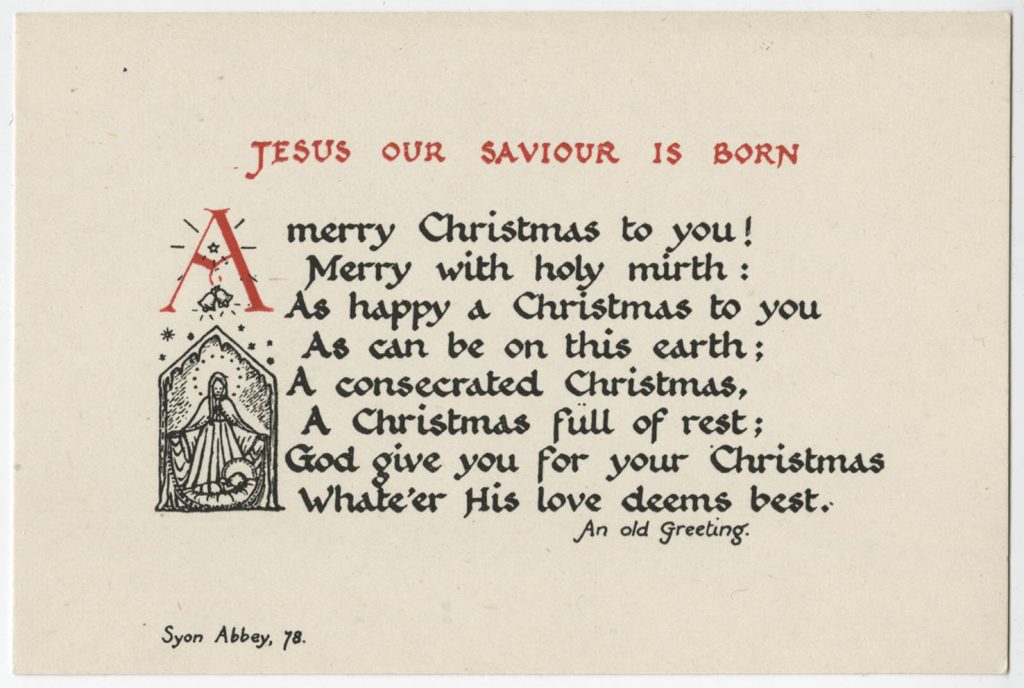
EUL MS 389/CRE/3 – A Christmas prayer card created by Sister Mary Veronica Kempson, c 1933-2008.
Provided for research and reference only. Permission to publish, copy, or otherwise use this work must be obtained from University of Exeter Special Collections (http://as.exeter.ac.uk/heritage-collections/) and all copyright holders.
The Syon Abbey Medieval and Modern Manuscript Collection contains an illuminated transcript of the words and musical notation for ‘In Vigilia Nativitatis’ (which translates to ‘On Christmas Eve’) from the Roman Martyrology [EUL MS 262/add1/111]. This is a proclamation of the birth of Christ and would traditionally have been chanted or recited on Christmas Eve. It also contains a note on the back which details that the ‘Syon melody’ was originally taken from the Lisbon book and was handed down orally with some alterations. This ‘Christmas Martyrology’ was created in 1952 by Sister Mary Stanislas, of whom more artwork can be found in the Syon Abbey archive.
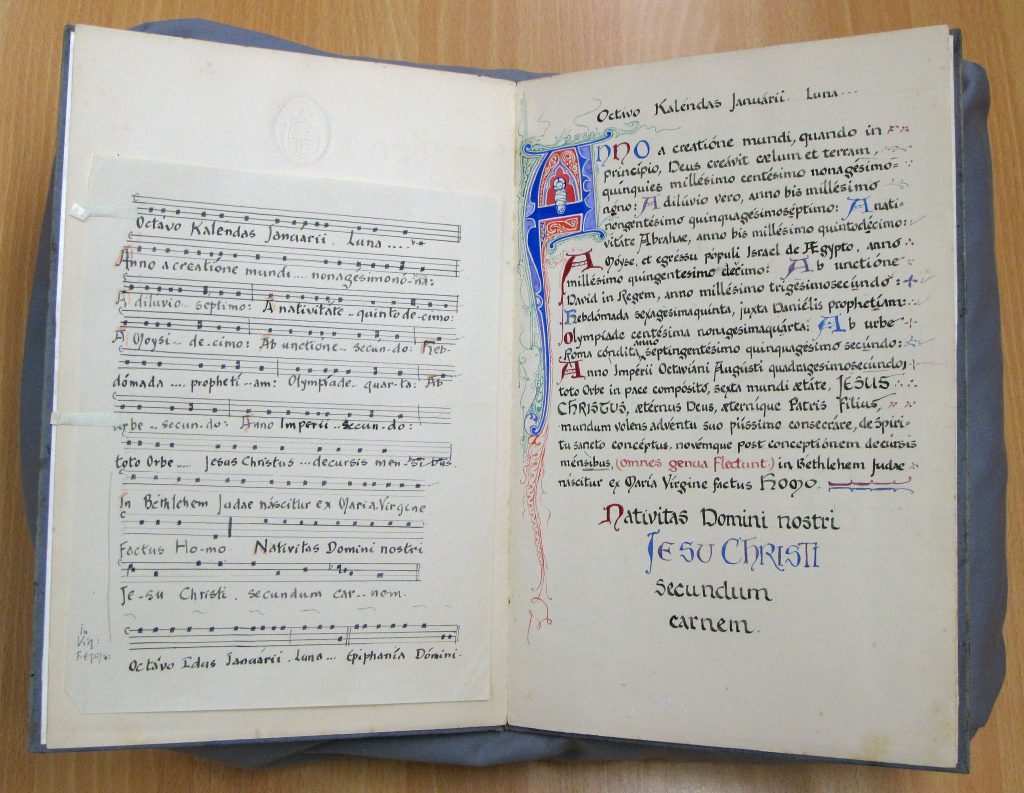
EUL MS 262/add1/111 – ‘In Vigilia Nativitatis’, created by Sister Mary Stanislas in 1952.
Provided for research and reference only. Permission to publish, copy, or otherwise use this work must be obtained from University of Exeter Special Collections (http://as.exeter.ac.uk/heritage-collections/) and all copyright holders.
To close…
The Syon Abbey Collection contains an array of fascinating material, including many insights into how the community celebrated Christmas. To find out more about the Syon Abbey Collection click here, or head to the Special Collections website to search our online archives catalogue. For those feeling festive, why not take a look at our Twitter account, where we are posting images from across the collections in our very own virtual Advent Calendar.
By Sophie Morgan, Volunteer

